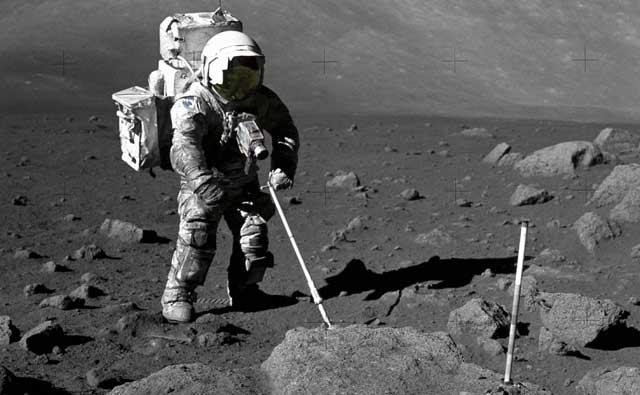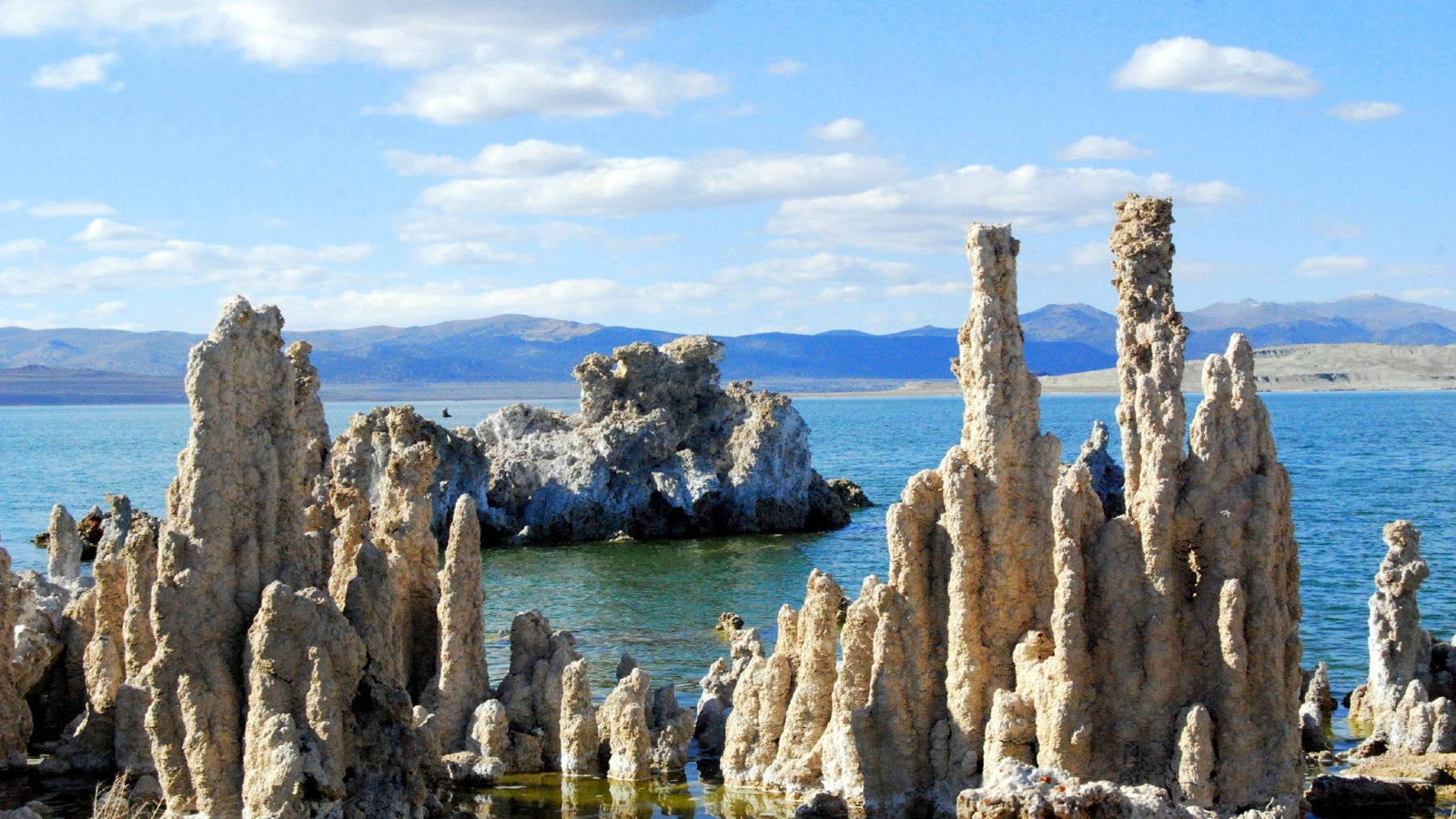
Is Moon Mining Economically Feasible?

The moon may offer pay dirt with a rewarding mother lode of resources, a celestial gift that is literally up for grabs. But what's really there for the taking, and at what cost?
A new assessment of whether or not there's an economic case for mining the moon has been put forward by Ian Crawford, a professor of planetary science and astrobiology at Birkbeck College, London. His appraisal is to appear in a forthcoming issue of the journal Progress in Physical Geography.
Crawford said it's hard to identify any single lunar resource that will be sufficiently valuable to drive a lunar resource extraction industry on its own. Nonetheless, he said the moon does possess abundant raw materials that are of potential economic interest. [Home On the Moon: How to Build a Lunar Colony (Infographic)]
Lunar resources could be used to help build up an industrial infrastructure in near-Earth space, Crawford said, a view shared by space scientist Paul Spudis of the Lunar Planetary Institute and others.
"If the moon's resources are going to be helpful, they are going to be helpful beyond the surface of the moon itself," Crawford said. Still, the overall case for any future payoff from exploiting the moon's resources has yet to be made, Crawford said.
"It's quite complicated," he told Space.com. "It's not simple at all."
Vanishing resource
Breaking space news, the latest updates on rocket launches, skywatching events and more!
One bit of skepticism from Crawford concerns helium-3. Advocates envision mining the moon for this isotope of helium, which gets embedded in the upper layer of lunar regolith by the solar wind over billions of years. Hauling back the stuff from the moon could power still-to-be-built nuclear fusion reactors here on Earth, advocates say.
"It doesn't make sense, the whole helium-3 argument," Crawford said. Strip-mining the lunar surface over hundreds of square kilometers would produce lots of helium-3, he said, but the substance is a limited resource.
"It's a fossil fuel reserve. Like mining all the coal or mining all the oil, once you've mined it … it's gone," Crawford said. The investment required and infrastructure necessary to help solve the world's future energy needs via moon-extracted helium-3 is enormous and might better be used to develop genuinely renewable energy sources on Earth, he added.
"It strikes me that, as far as energy is concerned, there are better things one should be investing in. So I'm skeptical for that reason. But that doesn't mean that I don't think the moon, in the long-term, is economically useful," Crawford said.
But Crawford has a caveat about helium-3: Estimates for the abundance of the isotope are based on Apollo moon samples brought back from the low latitudes of the moon.
"It's possible that helium-3 and other solar-wind–implanted ions, like hydrogen, may be in a higher abundance in the cold regolith near the lunar poles. That would be an important measurement to make and would require a polar lander," Crawford said.
Such information would increase researchers' knowledge, not only of the helium-3 inventory, but also possibly of useful solar wind-implanted elements, like helium-4, as well as hydrogen, carbon and nitrogen resources, he added.
Consistent story
A top of the list, must-do action item, Crawford said, is determining how much water is truly locked up within the moon's polar craters.

Remote sensing of the moon from orbiting spacecraft, including radar data, is telling a consistent story about this resource, which can be processed into oxygen and rocket fuel. [Water on the Moon: What It Could Mean for Exploration (Video)]
"But to really get to the bottom of it, we need in-situ [on-the-spot] measurements from the surface at the lunar poles," Crawford said. "It's first on my list [of necessary steps] … and when we have an answer to that, we can plan accordingly."
Rare earth elements
Better knowledge of the availability of rare earth elements on the moon would also be valuable, Crawford said.
"It's entirely possible that when we really explore the moon properly we will find higher concentrations of some of these materials … materials that are not resolvable by orbital remote sensing," he said. The moon might harbor concentrations of rare earth elements such as uranium and thorium — as well as other useful materials that we're not aware of today — in small, geographically restricted areas, he said,
"To explore the whole moon at the level of detail required, that's a big undertaking," Crawford said. "But long term, we should be keeping an open mind to that."
Crashed asteroids
In rounding out his lunar resource listing, Crawford points to the high-value platinum-group elements. As space researcher Dennis Wingo and others previously pointed out, a lot of metallic asteroids have pummeled the moon over the eons. Locating those impactors could lead lunar prospectors to big yields of valuable platinum-group elements, Crawford said.

"If you're just interested in platinum group elements, you would probably go and mine the asteroids," Crawford said. "On the other hand, if going to the moon for scavenging polar volatiles, rare earth elements … then the impact sites of crashed asteroids could offer an added bonus."
"So you add all of these things together, [then] even without helium-3, you can start to see that the moon might become of economic interest in the longer term. That's my take," Crawford concluded.
Time to demonstrate
How should humanity demonstrate the collection, extraction and utilization of lunar resources? And when should this happen?
"Lunar resource exploration should be based on the same methods that have guided humans on their centuries-old exploration of terrestrial resources," said Angel Abbud-Madrid, director of the Center for Space Resources at the Colorado School of Mines in Golden, Colorado.
Abbud-Madrid told Space.com that here on Earth, resource discovery is quickly followed by drilling, excavation, extraction and processing operations to enable the utilization of those resources.
"For the moon, sufficient prospecting — through remote sensing — and identification of valuable resources, such as oxygen and hydrogen for in-situ applications, has been done to date," Abbud-Madrid said. Based on these findings, he said, the necessary technologies and prototypes to collect and extract these elements have been developed and tested on terrestrial analog sites.
For example, NASA's Resource Prospector Mission, a concept mission aiming for launch in 2018, would verify the feasibility of lunar resource extraction, as would several other mission concepts from the private sector, Abbud-Madrid said. Such work, in turn, will pave the way to incorporating In Situ Resource Utilization, known as ISRU, in future exploration planning, he said.
"Thus, the time has come to demonstrate these systems on the surface of the moon," Abbud-Madrid concluded.
To read Ian Crawford's "Lunar Resources: A Review Paper," go here.
Leonard David has been reporting on the space industry for more than five decades. He is former director of research for the National Commission on Space and is co-author of Buzz Aldrin's 2013 book "Mission to Mars – My Vision for Space Exploration" published by National Geographic with a new updated paperback version to be released in May of this year. Follow us @Spacedotcom, Facebook or Google+. Originally published on Space.com.
Join our Space Forums to keep talking space on the latest missions, night sky and more! And if you have a news tip, correction or comment, let us know at: community@space.com.

Leonard David is an award-winning space journalist who has been reporting on space activities for more than 50 years. Currently writing as Space.com's Space Insider Columnist among his other projects, Leonard has authored numerous books on space exploration, Mars missions and more, with his latest being "Moon Rush: The New Space Race" published in 2019 by National Geographic. He also wrote "Mars: Our Future on the Red Planet" released in 2016 by National Geographic. Leonard has served as a correspondent for SpaceNews, Scientific American and Aerospace America for the AIAA. He has received many awards, including the first Ordway Award for Sustained Excellence in Spaceflight History in 2015 at the AAS Wernher von Braun Memorial Symposium. You can find out Leonard's latest project at his website and on Twitter.
